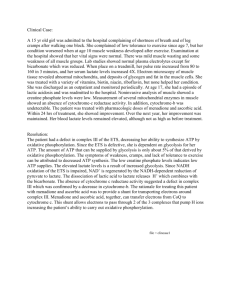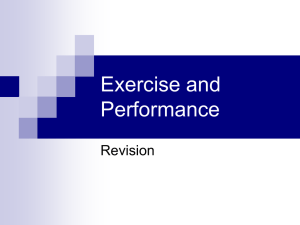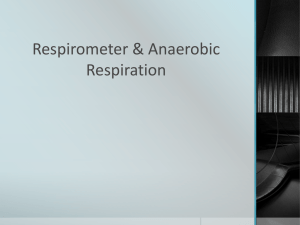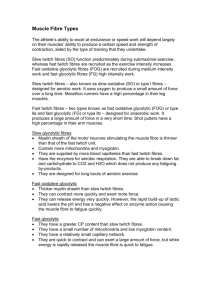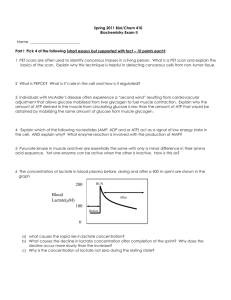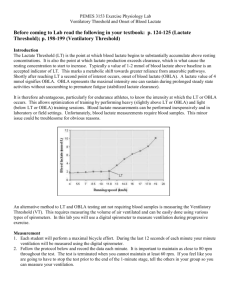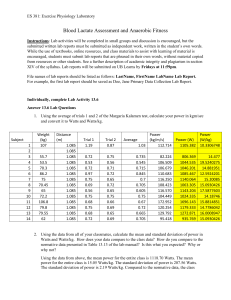Lactic Acid & The Cori Cycle
advertisement
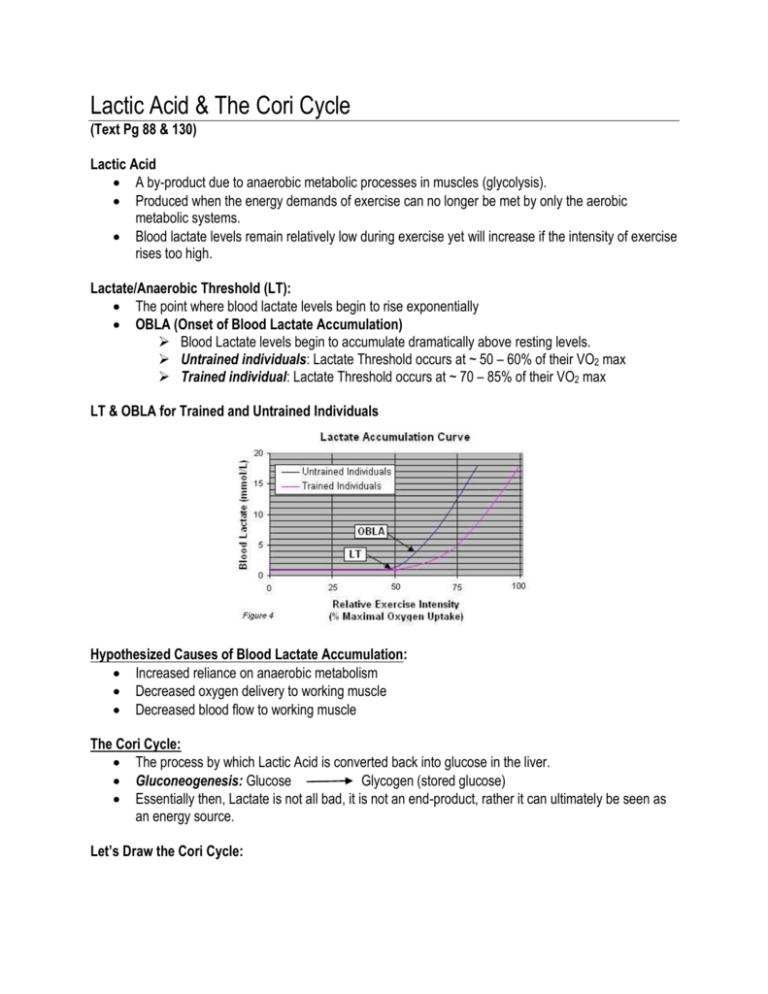
Lactic Acid & The Cori Cycle (Text Pg 88 & 130) Lactic Acid A by-product due to anaerobic metabolic processes in muscles (glycolysis). Produced when the energy demands of exercise can no longer be met by only the aerobic metabolic systems. Blood lactate levels remain relatively low during exercise yet will increase if the intensity of exercise rises too high. Lactate/Anaerobic Threshold (LT): The point where blood lactate levels begin to rise exponentially OBLA (Onset of Blood Lactate Accumulation) Blood Lactate levels begin to accumulate dramatically above resting levels. Untrained individuals: Lactate Threshold occurs at ~ 50 – 60% of their VO2 max Trained individual: Lactate Threshold occurs at ~ 70 – 85% of their VO2 max LT & OBLA for Trained and Untrained Individuals Hypothesized Causes of Blood Lactate Accumulation: Increased reliance on anaerobic metabolism Decreased oxygen delivery to working muscle Decreased blood flow to working muscle The Cori Cycle: The process by which Lactic Acid is converted back into glucose in the liver. Gluconeogenesis: Glucose Glycogen (stored glucose) Essentially then, Lactate is not all bad, it is not an end-product, rather it can ultimately be seen as an energy source. Let’s Draw the Cori Cycle: Fibre Type & Athletic Performance (Text Pg 90 – 93) It's important to note that certain muscles are more adapted to one energy production system than another. There are Two Main Muscle Fibre Types 1. Slow Twitch Fibres Suited for repeated contractions during activities requiring a force output of < 20-25% of max force output. Type I: Slow Oxidative 2. Fast Twitch Fibres (2 subdivision) Significantly greater force and speed generating capability than slow twitch fibres. They have the ability to tense and relax quickly, with low endurance levels Type IIA: Fast Oxidative Glycolytic Type IIB: Fast Glycolytic The Fibre Type Continuum Slow Oxidative (Type I) • Generates energy slowly Fast Oxidative Glycolysis (Type IIA) • High speed of energy release Fast Glycolysis (Type IIB) • Store lots of glycogen • Stores lots of oxygen (myoglobin) • considered to be the intermediate type muscle fibre • High levels of enzyme activity for quick contractions • Dependant on aerobic processes • Can perform aerobically and anaerobically (glycolysis) • Do not require oxygen • Very fatigue resistant (able to maintain a lower level of tension for a long duration). • Moderate fatigue resistance • Fatigue quickly • With aerobic training, these fibres can become Type IIA fibres Sample Muscle Biopsy Slide
